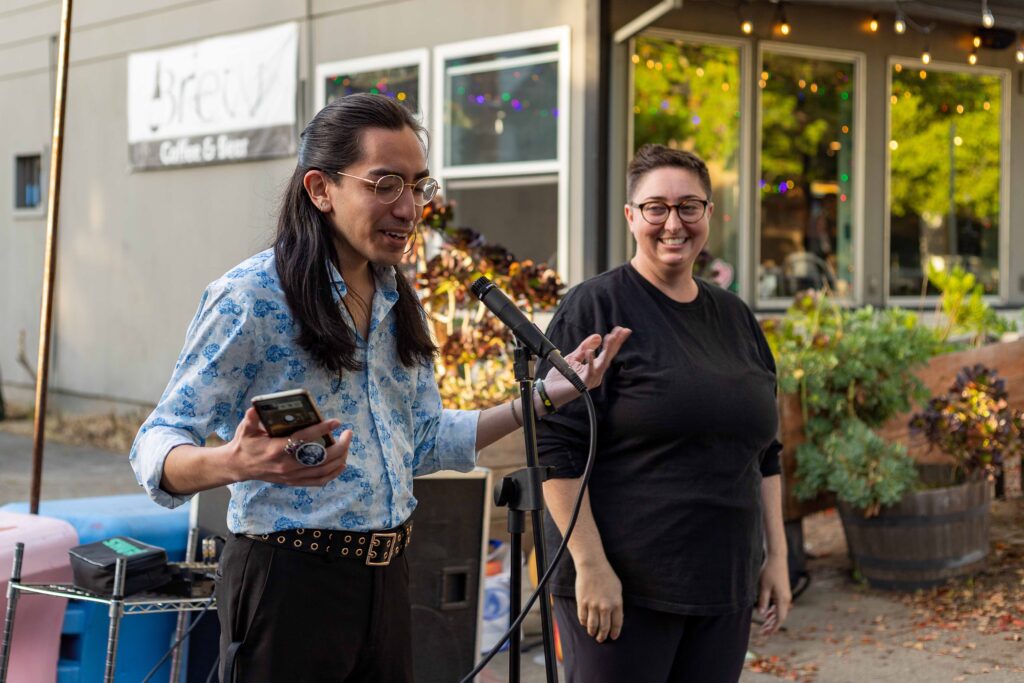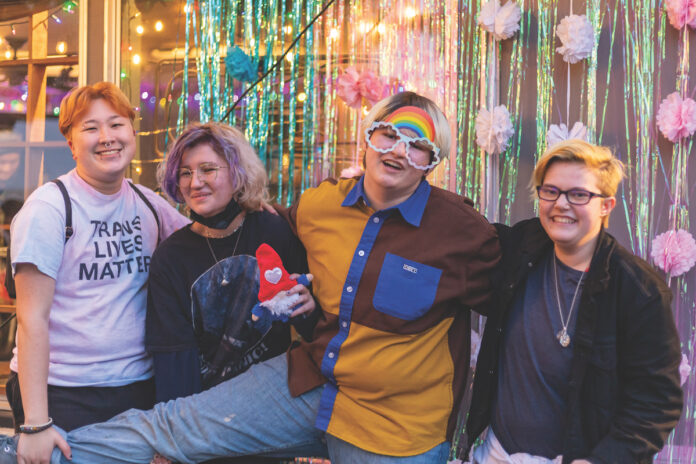“It’s been kind of hard being a trans person lately,” said Jennifer Rihl, her words met by a light chuckle from audience members.
A small crowd is gathered on the patio outside Brew Coffee & Beer House in downtown Santa Rosa. Most, like Rihl, are familiar faces, members of Sonoma County’s tight-knit but often overlooked queer community. On March 31, they gathered to acknowledge and celebrate International Transgender Day of Visibility with an evening of live performances, heartfelt speeches and what soon becomes a tense game of Jenga.
Held annually since 2009, the day is a celebration of the shared strength, resilience and courage of the transgender community. It was founded by Rachel Crandall-Crocker, a Michigan-based transgender activist, who had become tired and disillusioned by the representation of transgender people in the news and popular media.
“I wanted a day when, rather than talking about those who passed away, we could talk about those of us who were alive,” Crandall-Crocker wrote in a 2021 essay. “And I wanted a day that would bring together trans people from all over the world.”
Rihl, who spent 36 years in the closet before transitioning over the course of several years, says that visibility is something that fills her with an immense sense of confidence and self-love.
“[Visibility] gives me pride because even in the face of adversity, I’m still happy,” she says. “I spent 36 years hiding, you know, being in the background. Not anymore. I like living out loud.”
“There’s something uplifting about stepping into the world every day as the person that you actually are,” she says. “Most [cisgender, heterosexual] people don’t really understand that feeling. They don’t understand the years of torment that so many trans people go through.”
However, this year’s Transgender Day of Visibility isn’t all sunshine and rainbows. Last year was the deadliest on record for the transgender community, with at least 57 reported deaths—and in the last three months, state lawmakers around the country have introduced an alarming number of anti-LGBTQ and anti-transgender bills.
According to data from the American Civil Liberties Union and LGBTQ advocacy group Freedom for All Americans, more than 240 anti-LGBTQ bills have been proposed by state lawmakers in the last three months, with half of them targeting transgender people and youths. By comparison, only 41 anti-LGBTQ bills were proposed in the entirety of 2018—a nearly 400% increase in anti-LGBTQ legislation in the last four years.


“The fact that we are seeing a lot of retaliation for us being loud, and being ourselves and being openly proud of who we are—I think that it was inevitable that that was going to come through,” Emerson Robles-Tuttle, a youth advocate with LGBTQ Connection, says. “There is strength in visibility, but there can also be harm.”
“There’s a lot of reasons why many trans people choose not to be visible. There’s safety risks to that,” says Orlando O’Shea, one of the founding committee members of TransLife Sonoma. “The more visible we become, the more of a backlash there is.”
Events like Transgender Day of Visibility, says O’Shea, are a reminder that no matter the adversity they face, the transgender community is not going anywhere.
“I always see it as kind of a revolutionary act to be visible,” he says. “[Visibility is] saying we’re here; we won’t be erased.”











